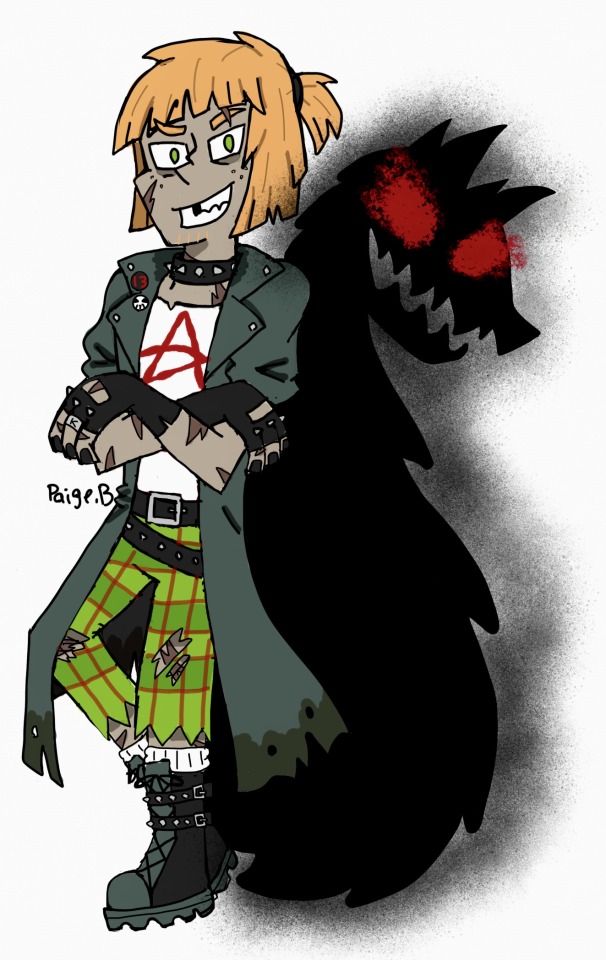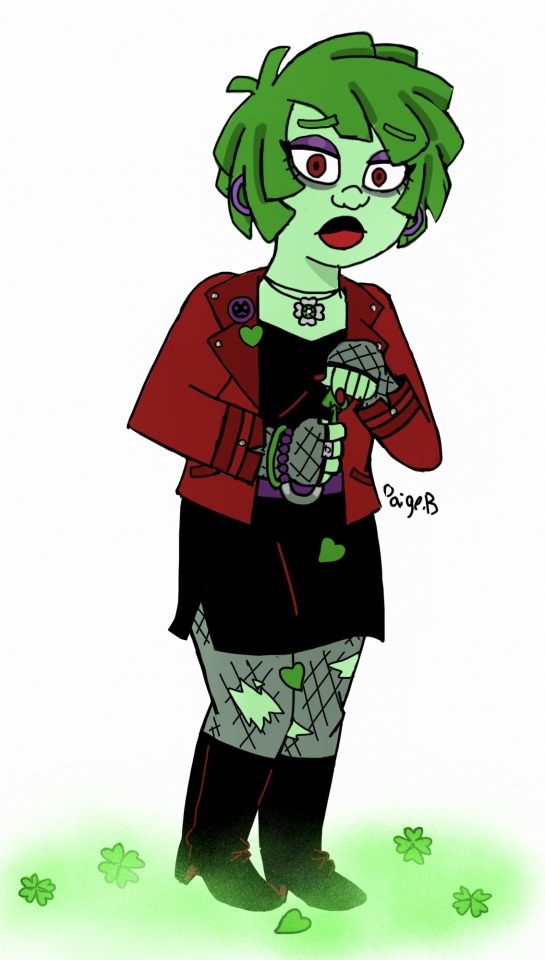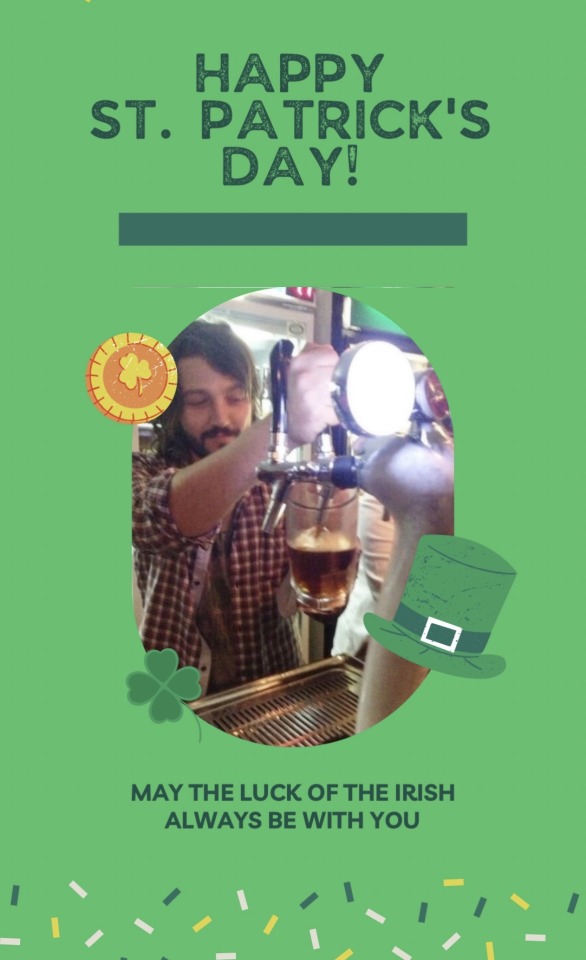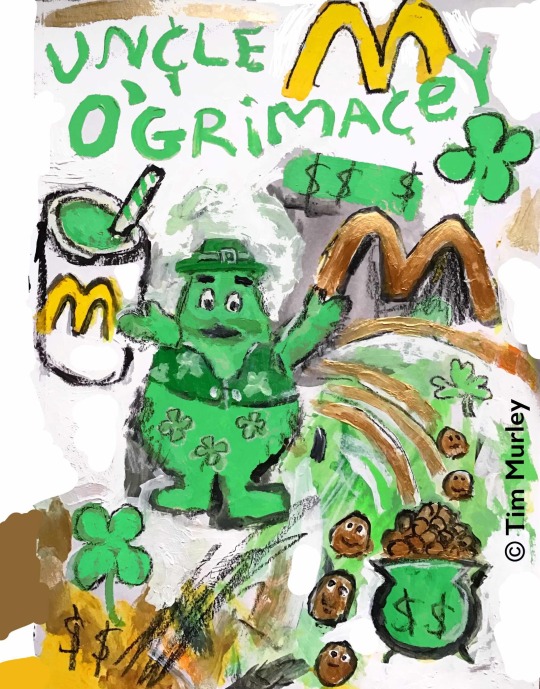#st. Patrick’s Day
Explore tagged Tumblr posts
Text
#holiday#holidays#new year’s eve#valentine’s day#st. patrick’s day#halloween#christmas#poll#tumblr polls
70 notes
·
View notes
Text
My birthday is in 6 days I would love to keep the lights on as a gift to myself. I’m $70 short and anything helps.
Happy early St. Patrick’s Day
Cashapp: $ChenoahChantel
Venmo: @ChenoahChantel
PayPal: @ChenoahChantel
PayPal Link: https://www.paypal.me/ChenoahChantel
58 notes
·
View notes
Text

195 notes
·
View notes
Text
youtube
Happy St. Patrick’s Day!
21 notes
·
View notes
Text
Meet Johnny 13 & Kitty🏍️🍀


Since today is St. Patrick’s Day, the day all about luck, thought I’d introduce my takes on the luck themed ghost couple, Johnny 13 & Kitty!!!!!!!🏍️🍀🏍️🍀🏍️🍀❤️💚❤️💚❤️💚❤️
All kinds of trouble seem to follow their path….usually just Johnny’s. I wonder why.
What do u think? I’d love to know💖💖💖
#Danny phantom#johnny 13#kitty#dp kitty#phanart#dp fanart#dp side hoes week 2023#dp johnny 13#phandom#johnny 13 and kitty#dp redesigns#redesigns#st. patrick’s day#my art
92 notes
·
View notes
Text

wouldn’t be st. paddy’s day without a little loaf of soda bread (with some raisins, too!) ☘️🍞
#bread#homemade bread#soda bread#st. patrick’s day#st. patricks day#st. paddy’s day#amateur baking#amateur cooking#paul hollywood recipe#mine#baking#baked goods#bakers of tumblr
8 notes
·
View notes
Text

Happy St. Patrick’s Day to one and all!🍀🍀🍀
8 notes
·
View notes
Text

Dear Thebestnerd-critic,

I think I’ll just get my emergency stash and pretend the snakes aren’t there.
(Hopefully, they’re not poisonous.)
- Phoenix Wright
#thebestnerd-critic#Phoenix Wright#Ace Attorney#St. Patrick’s Day#Mod Commentary#If only they were in a plane then I’d make a Snakes on a Plane reference
7 notes
·
View notes
Text

8 notes
·
View notes
Text
Had a St. Patrick’s dinner with my parents and joked we needed to listen to some Hozier only to discover my mom has never heard of him. Now, this happens all the time (she rarely knows the names of “new” artists) so I clarified he’s the guy who sang “Take Me to Church” and she never heard of it?!?
Where was my mother in 2014?!??
3 notes
·
View notes
Text

Pot of gold McNuggets. 🍀🥇🍗☘️
#uncle o’grimacey#pop art#andy warhol#basquiat#mcdonalds#fast food#happy meal#happy meal toys#golden nugget#gold nugget#pot of gold#leprechaun#leprechauns#shamrock#grimace#shamrock shake#ronald mcdonald#saint patricks day#saint patrick's cathedral#Saint Patrick’s day#st patricks day#st pattys day#happy st patricks day#happy st pattys day#st paddys day#st. patrick’s day#Golden Arches#big mac#kiss me im irish#ireland
3 notes
·
View notes
Text

86 notes
·
View notes
Text
9 Surprising Facts About St. Patrick’s Day
Who Was the Real St. Patrick? Was That Legend About the Snakes True? And Why Did So Many St. Patrick's Day Traditions Start in America?
— By History .Com Editors | March 7, 2024

Photograph By Anna Usova/Getty Images
While St. Patrick’s Day is now associated with wearing green, parades (when they're not canceled) and beer, the holiday is grounded in history that dates back more than 1,500 years. The earliest known celebrations were held in the 17th century on March 17, marking the anniversary of the death of St. Patrick in the 5th century. Learn more about the holiday’s history and how it evolved into the event it is today.
1. The Real St. Patrick Was Born in Britain
Much of what is known about St. Patrick's life has been interwoven with folklore and legend. Historians generally believe that St. Patrick, the patron saint of Ireland, was born in Britain (not Ireland) near the end of the 4th century. At age 16 he was kidnapped by Irish raiders and sold as a slave to a Celtic priest in the area now known as Northern Ireland. After toiling for six years as a shepherd, he escaped back to Britain. He eventually returned to Ireland as a Christian missionary.
2. St. Patrick Was Never Canonized
Despite his status as a patron saint, St. Patrick was never actually canonized by the Church during his lifetime. This was primarily because such a process did not exist when he died in A.D. 461. It wasn’t until 993 that St. Ulrich of Augsburg became the first saint to be formally canonized, and it was not until the 12th century that the Church established an official canonization process overseen by the Pope. While St. Patrick has not been formally canonized, many consider him to hold saintly status.
3. There Were No Snakes Around for St. Patrick to Banish from Ireland
Among the legends associated with St. Patrick is that he stood atop an Irish hillside and banished snakes from Ireland—prompting all serpents to slither away into the sea. In fact, research suggests snakes never occupied the Emerald Isle in the first place. There are no signs of snakes in the country’s fossil record. And water has surrounded Ireland since the last glacial period. Before that, the region was covered in ice and would have been too cold for the reptiles.
4. Leprechauns Are Likely Based on Celtic Fairies
The red-haired, green-clothed Leprechaun is commonly associated with St. Patrick’s Day. The original Irish name for these figures of folklore is “lobaircin,” meaning “small-bodied fellow.” Belief in leprechauns likely stems from Celtic belief in fairies— tiny men and women who could use their magical powers to serve good or evil. In Celtic folktales, leprechauns were cranky souls, responsible for mending the shoes of the other fairies.
5. The Shamrock Was Considered a Sacred Plant
The shamrock, a three-leaf clover, has been associated with Ireland for centuries. It was called the “seamroy” by the Celts and was considered a sacred plant that symbolized the arrival of spring. According to legend, St. Patrick used the plant as a visual guide when explaining the Holy Trinity. By the 17th century, the shamrock had become a symbol of emerging Irish nationalism.
6. Ireland’s Only Female Patron Saint, Brigid, Has Her Own Holiday
One of Ireland’s three patron saints, alongside St. Patrick and St. Columcille, St. Brigid (or Bridget) is the patron saint of Irish nuns, newborns, midwives, dairy maids and cattle. Believed to have been born in Ireland sometime around A.D. 450, Brigid was the daughter of a pagan king and an enslaved woman. She grew up to serve the church by building a church in Kildare, which was the site of a former shrine to the Celtic goddess, eponymous to her.
Said to have died in A.D. 524, Brigid's memory was kept alive by the church, which canonized her as St. Brigid. In 2023, Ireland designated February 1 a permanent public holiday in Brigid’s honor.
7. The First St. Patrick’s Day Parade Was Held in America
While people in Ireland had celebrated St. Patrick since the 1600s, the tradition of a St. Patrick’s Day parade began in America and actually predates the founding of the United States.
Records show that a St. Patrick’s Day parade was held on March 17, 1601, in a Spanish colony in what is now St. Augustine, Florida. The parade and a St. Patrick’s Day celebration a year earlier were organized by the Spanish Colony's Irish vicar Ricardo Artur. More than a century later, homesick Irish soldiers serving in the English military marched in Boston in 1737 and in New York City on March 17. Enthusiasm for the St. Patrick’s Day parades in New York City, Boston and other early American cities only grew from there. In 2020 and 2021, parades throughout the country, including in New York City and Boston, were canceled or postponed for the first time in decades due to the outbreak of the COVID-19 virus. They returned in 2022.
8. The Irish Were Once Scorned in America
While Irish Americans are now proud to showcase their heritage, the Irish were not always celebrated by fellow Americans. Beginning in 1845, a devastating potato blight caused widespread hunger throughout Ireland. While approximately 1 million perished, another 2 million abandoned their land in the largest-single population movement of the 19th century. Most of the exiles—nearly a quarter of the Irish nation—came to the shores of the United States. Once they arrived, the Irish refugees were looked down upon as disease-ridden, unskilled and a drain on welfare budgets.
9. Corned Beef and Cabbage Was an American Innovation
The meal that became a St. Patrick’s Day staple across the country—corned beef and cabbage—was an American innovation. While ham and cabbage were eaten in Ireland, corned beef offered a cheaper substitute for impoverished immigrants. Irish Americans living in the slums of lower Manhattan in the late 19th century and early 20th purchased leftover corned beef from ships returning from the tea trade in China. The Irish would boil the beef three times—the last time with cabbage—to remove some of the brine.
#History.Com#St. Patrick’s Day#Nine Surprising Facts#Patrick's Day Traditions | America 🇺🇸#The Real St. Patrick | Born in Britain 🇬🇧#St. Patrick | Never Canonized#No Snakes 🐍 | Ireland 🇮🇪#Leprechauns | Celtic Fairies 🧚 🧚♂️ 🧚♀️#Shamrock ☘️ | Sacred Plant 🌱 🪴#St. Patrick’s Day Parade | March 17 1601 | United States 🇺🇸#Corned Beef 🥩 | Cabbage 🥬 | American 🇺🇸 Innovation
3 notes
·
View notes
Text

Johnny & Friends: St. Patrick’s Day ☘️
#Johnny & Friends#Nickelodeon#Nicktoons#Art#Artist#Art of Tumblr#St. Patrick#St. Patrick’s Day#St. Patrick’s Day 2024
3 notes
·
View notes
Text


chocolate irish coffee cake: chocolate cake laced with bailey’s and espresso with a buttercream spiked with the liqueur and a chocolate ganache in the middle
happy st. paddy’s day! ☘️🍻☘️🍻
#sweet stuff#bailey’s irish cream#irish cream#chocolate cake#espresso#cappuccino#coffee#st. patricks day#st. patrick’s day#st. paddy’s day#baked goods#amateur baking#bakers gonna bake#baking#amateur cooking#mine
3 notes
·
View notes
